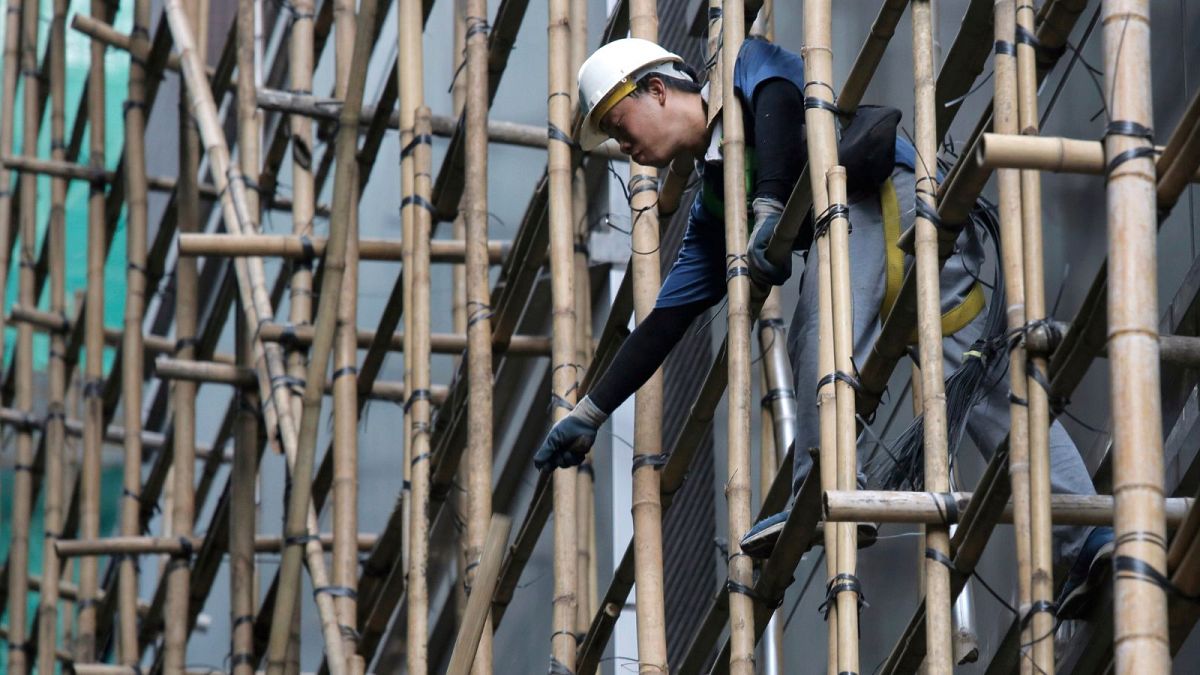

Across the globe, various landscapes—both natural and man-made—are experiencing significant transitions. In Hong Kong, a tradition that has long defined its skyline faces change as modern methodologies become favored. Meanwhile, in the quaint Spanish town of Brihuega, social media fame has brought challenges of overtourism. Compounding the transformations in natural habitats, the Democratic Republic of the Congo explores energy development opportunities that could threaten wildlife, and in England, interesting strides in wildlife reintroduction and social research are making waves.
Beneath the towering structures of Hong Kong, a fascinating shift is occurring. The use of bamboo scaffolding, an iconic element in construction, known for its adaptability and historical significance, is gradually being replaced by metal alternatives. The move, driven by the local government’s concerns over safety and industry shifts, reflects an evolving approach to construction practices. While this method has long showcased the city’s blend of tradition and innovation, its phase-out marks a notable point in the evolution of Hong Kong’s architectural landscape.
Meanwhile, in Spain, the small town of Brihuega has felt the impact of viral social media trends firsthand. In July alone, the town’s picturesque lavender fields drew over 100,000 visitors eager to experience their beauty. This influx has led to overtourism concerns, challenging the community to balance the benefits of increased visibility with the preservation of local serenity and resources. The situation highlights the broad-reaching effects of digital platforms in altering travel dynamics and emphasizing the need for sustainable tourism strategies.
In Africa, the Democratic Republic of the Congo is navigating complex decisions surrounding its natural resources. The recent opening of vast areas for oil and gas exploration raises sustainable development queries. These regions, rich with biodiversity and home to endangered species like lowland gorillas and bonobos, present a critical intersection between conservation efforts and the pursuit of energy needs. As these landscapes face potential environmental shifts, the importance of careful planning and consideration for ecological preservation becomes ever more pressing.
In England, the conversation has shifted towards conservation in the form of reintroducing beavers into the wild. Despite a promising start with the release on Purbeck Heath, the initiative has stalled, with no new licenses granted for further releases. This moment highlights the intricacies of wildlife management and the careful path required for such ecological projects to succeed. The enthusiasm of conservationists and supportive farmers underscores a growing movement toward enriching local ecosystems with these natural architects.
Coinciding with these discussions of environment and community is a new study emerging from England, addressing socio-environmental disparities. The research indicates that ethnic minorities and residents in economically challenged areas face elevated risks during heatwaves. It identifies key factors like housing quality and access to cooling, shaping the health outcomes of these communities. As the research unfolds, it underscores the critical importance of addressing socio-economic inequities in climate resilience planning, offering pathways for more inclusive and equitable health strategies.
In conclusion, as these stories unfold across continents, they reveal a shared narrative of change, whether in tradition, industry, environmental stewardship, or social research. Each scenario provides a window into the interconnectedness of global societies and ecosystems, reminding us of the mindfulness needed in decisions that affect our diverse world. Through thoughtful progress and collaborative approaches, these transitions hold the promise of greater harmony and sustainability in the future.
Source: {link}
